Let’s embark on a culinary journey that’s all about embracing the power of green – Scallion-Flavored Shio Ramen. As a seasoned chef and passionate food blogger, I’m thrilled to share this recipe with you. This dish is not just a bowl of ramen; it’s a masterpiece that celebrates the magic of scallions. Join me in unlocking the secrets to this umami-rich, aromatic delight.
Scallion-Flavored Shio Ramen Recipes
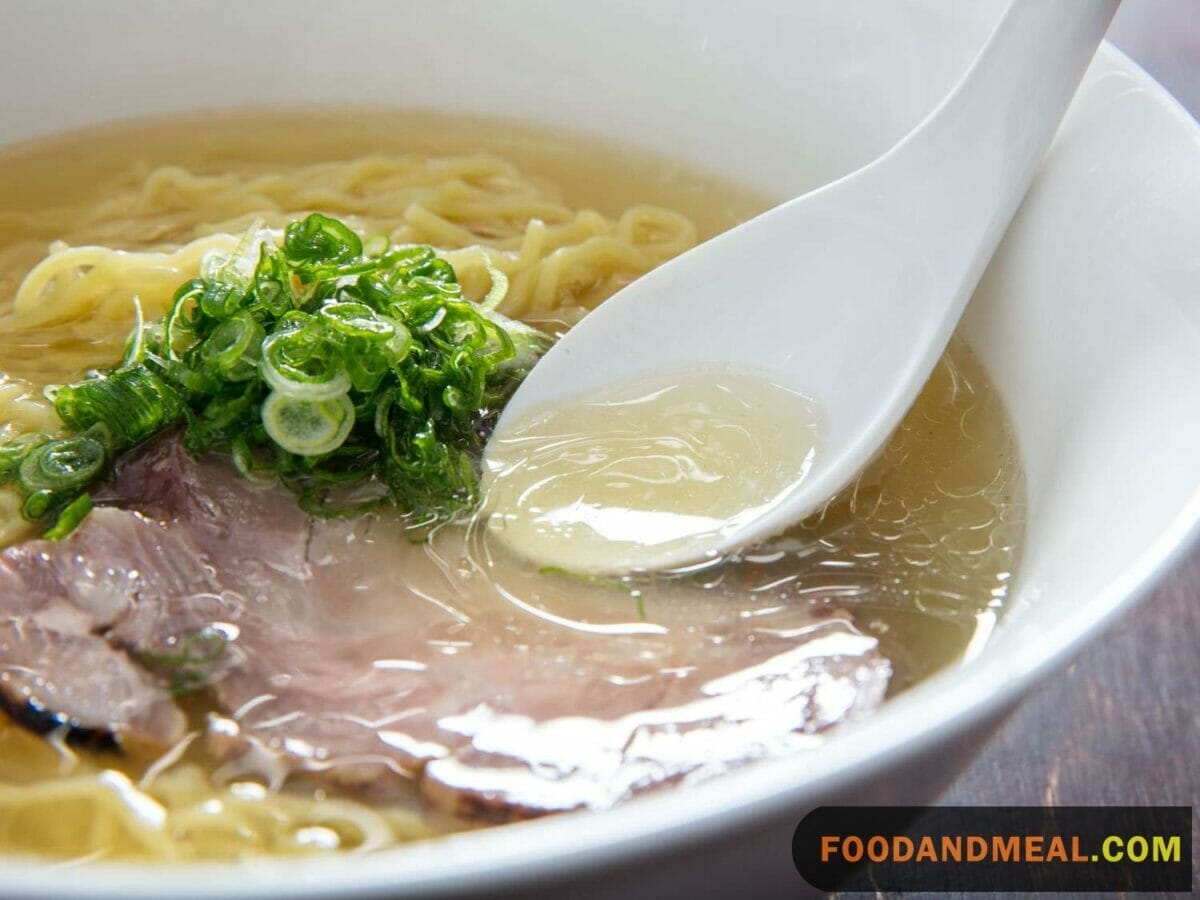
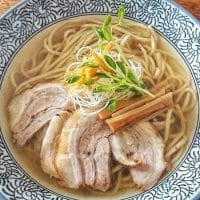
Scallion-Flavored Shio Ramen
Equipment
Ingredients
- ½ cup Shio Tare
- 5 cups any type clear soup
- 1⅓ pounds noodles fresh, such as Chukasuimen
- 4 to 6 tablespoons Negi Oil
- 4 cups scallion chopped
- 4 Salted Eggs halved
Instructions
- With all your ingredients ready to go, bring a large pot of water to a boil over medium-high heat.
- Heat your ramen bowls by filling them halfway with hot water. The bowls don’t need to be scalding, but they should be hot to the touch. Dump out the hot water and dry the bowls with some paper towels or a clean towel.
- Put the tare and soup in a medium saucepan. Mix and bring to a simmer over low heat.
- Cook the noodles in the large pot of boiling water. Ramen that has been cut to a standard thickness (about 1 mm) will cook in 1 to 2 minutes.
- Put 1 tablespoon of negi oil in each ramen bowl.
- About 30 seconds before the noodles are finished cooking, ladle the soup into the ramen bowls.
- Drain the noodles, taking care to shake off as much excess water as you can. Carefully place some noodles in each bowl of soup, keeping them tidy.
- Place 1 cup of chopped scallions and 1 salted egg neatly on the ramen. (The scallions should almost cover the entire bowl.) Drizzle with an extra bit of negi oil, if desired. Serve immediately.
Video
Notes
- You can substitute any kind of aromatic cooking oil for the negi oil, such as garlic or herb oil.
- Soup: Mix equal parts unseasoned low-sodium chicken or vegetable broth and dashi broth. Japanese dashi powder to make broth can be found in the Asian foods section of many supermarkets or in Asian grocery stores or online. For a vegetarian version, find a dashi made from konbu and mushrooms.
- Noodles: Use 3 ounces of dried ramen noodles per bowl, preferably the thin, straight style.
Nutrition
© Food And Meal
This website provides approximate nutrition information for convenience and as a courtesy only. Nutrition data is gathered primarily from the Spoonacular Database, whenever available, or otherwise other online calculators.
Alternative Method: Making Scallion-Flavored Shio Ramen with an Instant Pot
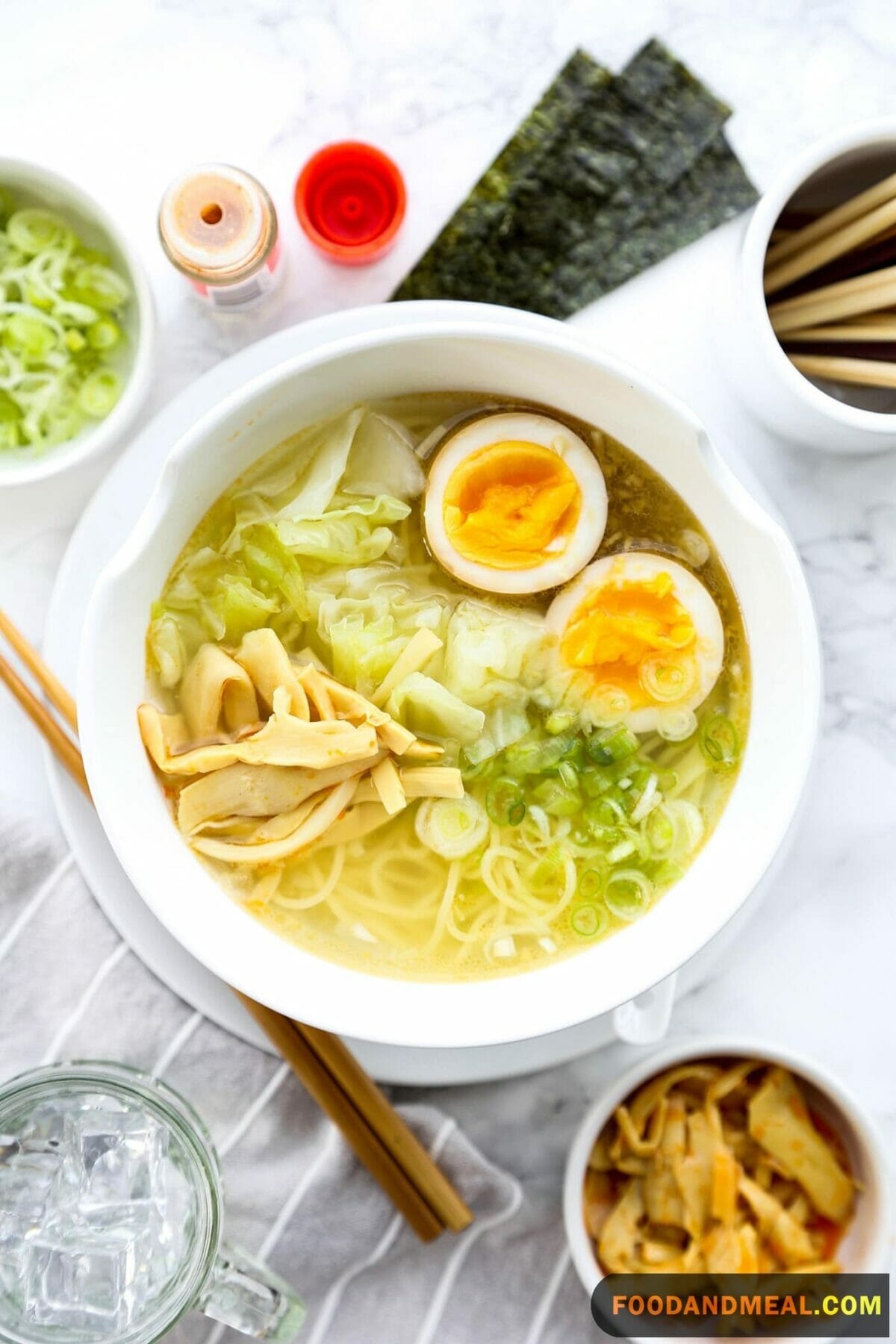
Ingredients:
- 1 pound of pork belly, sliced
- 4 bundles of ramen noodles
- 8 cups of chicken broth
- 1 cup of sliced scallions
- 2 tablespoons of sesame oil
- 2 tablespoons of soy sauce
- 2 tablespoons of shio (sea salt)
- 4 soft-boiled eggs
- Nori seaweed sheets, for garnish
- Red pepper flakes, for a spicy kick (optional)
Instructions:
- Set your Instant Pot to “Sauté” mode and add the sliced pork belly. Sauté until it’s browned and slightly crispy. Remove the pork and set it aside.
- In the same Instant Pot, add sesame oil and the sliced scallions. Sauté for a couple of minutes until they become fragrant and slightly tender.
- Add the chicken broth, shio (sea salt), and soy sauce to the Instant Pot. Stir well, making sure to scrape any browned bits from the bottom.
- Place the pork back into the pot and add the ramen noodles on top. Do not stir; let them sit on the surface.
- Close the Instant Pot and set it to “Manual” or “Pressure Cook” mode for 3 minutes.
- While the ramen is cooking, prepare your soft-boiled eggs. Boil water, gently place the eggs in the boiling water, and simmer for 7 minutes. Then, transfer them to an ice bath to stop the cooking process. Peel and halve the eggs.
- Once the Instant Pot cycle is complete, perform a quick release.
- Serve the Scallion-Flavored Shio Ramen by placing a portion of the ramen, broth, and pork in each bowl. Add the soft-boiled egg halves, garnish with Nori seaweed sheets, and sprinkle red pepper flakes for an optional kick.
- Enjoy your Instant Pot Scallion-Flavored Shio Ramen immediately, savoring the rich flavors and aroma of scallions.
Tips for making Scallion-Flavored Shio Ramen
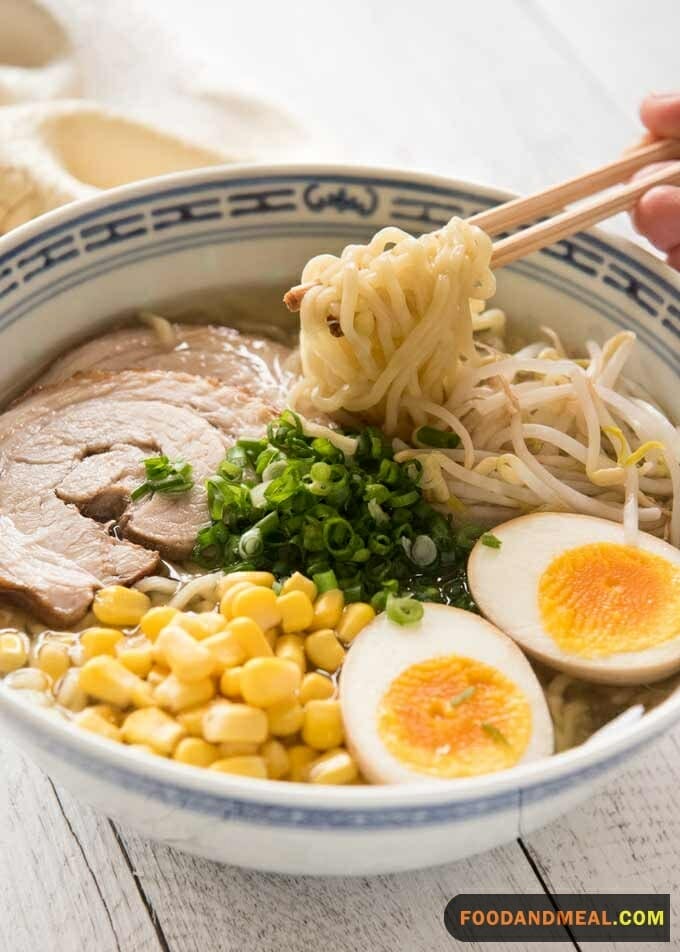
Serving Suggestion
- Enhance with Sides: Scallion-Flavored Shio Ramen pairs wonderfully with a side of Japanese cucumber salad or crispy tempura. The coolness of the cucumber salad balances the richness of the ramen, while the crunch of tempura adds delightful texture.
- Garnish Galore: Elevate your ramen presentation with a variety of garnishes. Consider a sprinkle of toasted sesame seeds, a drizzle of chili oil, or a handful of fresh bean sprouts. These additions not only enhance the flavor but also make your dish visually appealing.
- Refreshing Beverages: Complement the umami depth of your Scallion-Flavored Shio Ramen with a refreshing iced green tea or a glass of cold sake. These beverages enhance the overall dining experience by cleansing the palate between bites.
- Serve in Style: While a classic bowl of ramen is the traditional presentation, consider serving the ramen in a shallow, wide bowl for a modern touch. Alternatively, serve the broth and noodles in separate bowls for diners to assemble as they like.
- Leftover Transformation: If you have any leftover Scallion-Flavored Shio Ramen, consider turning it into a delectable stir-fry. Heat some oil in a pan, add the ramen, and stir-fry with your favorite vegetables and protein. It’s a quick and satisfying meal that minimizes food waste.
Cooking Tips
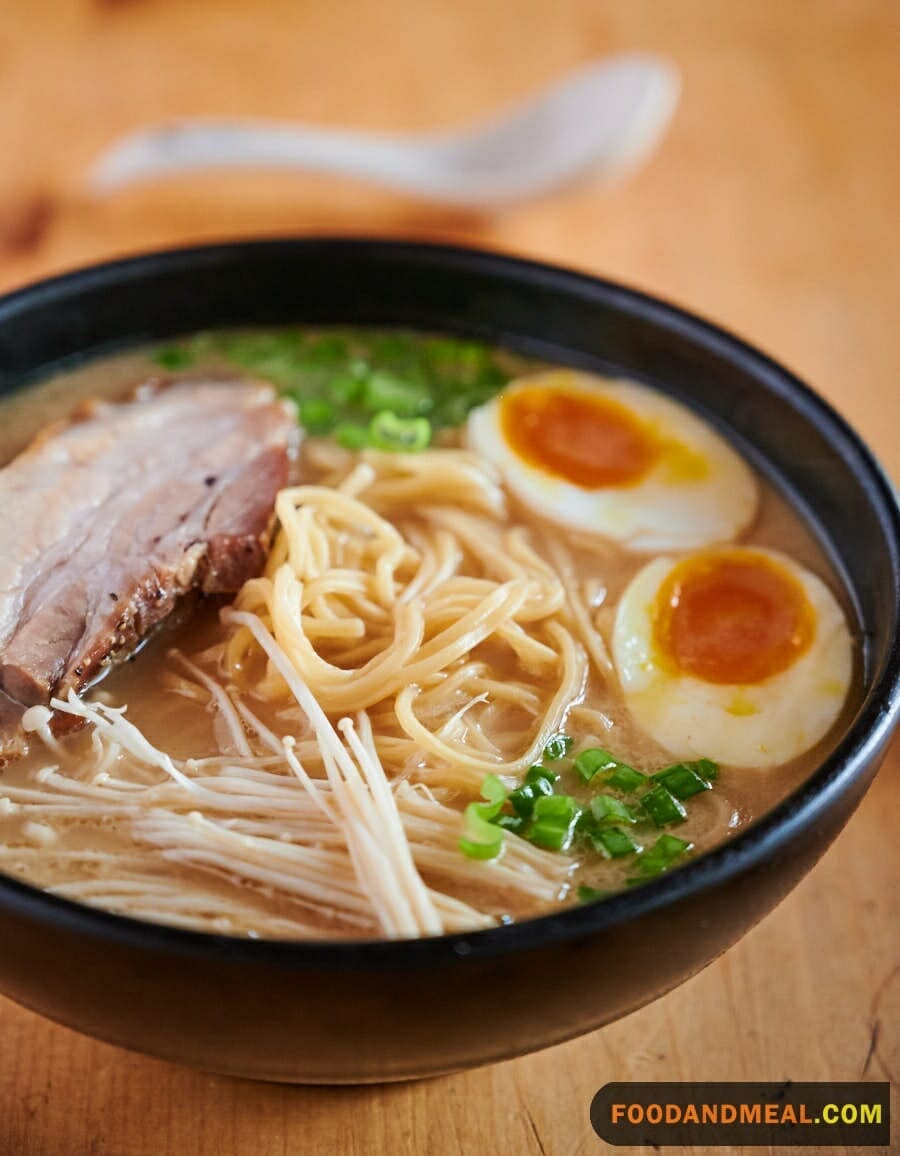
- The Broth’s Secret: Don’t rush the broth-making process. Simmer your broth gently for at least an hour to allow the flavors to meld. Be patient; the rich, complex taste is worth it.
- Soft-Boiled Eggs: Achieving the perfect soft-boiled egg is an art. For that luscious, slightly runny yolk, boil your eggs for exactly 6 minutes, then transfer them to an ice bath to stop the cooking process.
- Blanch Those Scallions: To enhance the scallion’s flavor and reduce their sharpness, blanch them briefly in hot water. It softens their bite and infuses the broth with a milder scallion essence.
- Salt Matters: Be cautious with the salt you add. Remember, it’s Shio Ramen, which means ‘salt’ in Japanese. Start with a little and adjust to taste. It’s easier to add more salt than to fix an overly salty broth.
- Timing is Key: Serve your ramen as soon as it’s ready. Overcooked noodles can turn mushy, and the broth may lose its intended richness. Enjoy it piping hot!
FAQs about Scallion-Flavored Shio Ramen

- Can I store leftover Scallion Shio Ramen? Yes, you can store any remaining ramen in an airtight container in the refrigerator for up to 2 days. Reheat gently on the stove, adding a little extra broth if needed to maintain the consistency.
- Can I use other types of noodles for this recipe? Absolutely! While ramen noodles are traditional, you can experiment with udon or soba noodles for a unique twist. Follow the package instructions for cooking.
- Can I make this recipe spicy? Of course! Add a touch of chili oil, sriracha, or your favorite hot sauce to the finished bowl for a spicy kick. Adjust the heat level to suit your taste.
- What’s the difference between Shio Ramen and other ramen styles? Shio Ramen is characterized by its clear, salt-based broth. In contrast, other styles like Miso, Shoyu, and Tonkotsu use different bases (miso paste, soy sauce, and pork bone, respectively) for their broth, resulting in distinct flavors.
- Is it necessary to use fresh scallions, or can I substitute with dried scallions? Fresh scallions are recommended to achieve the best flavor and texture. Dried scallions lack the vibrant, crisp quality that fresh ones bring to the dish, so it’s worth using fresh if possible.
Craft Scallion Shio Ramen: Learn the art of Scallion-Flavored Shio Ramen, share the recipe, and subscribe for more culinary adventures.
I'm James F Anderson, a noted sous chef from London and a Le Cordon Bleu alumnus. My career began in a Michelin-starred Parisian eatery, where my blend of classic and contemporary cooking, using seasonal ingredients, earned accolades. Recognized in culinary publications and on cooking shows, I’m committed to mentoring aspiring chefs and delivering memorable dining experiences, marking me as a standout talent in the culinary world.



